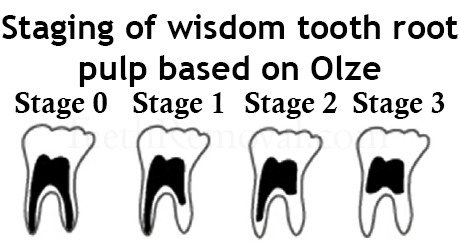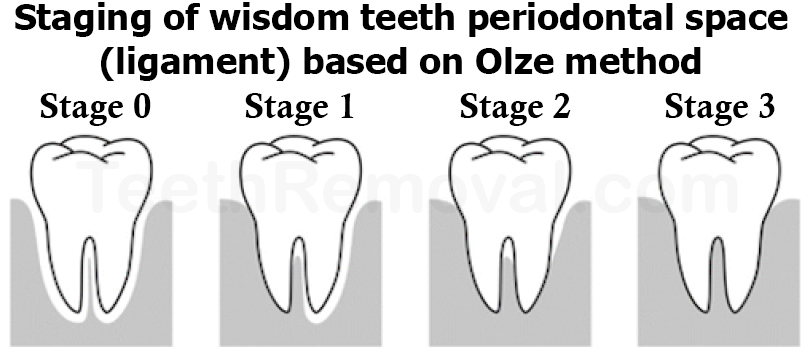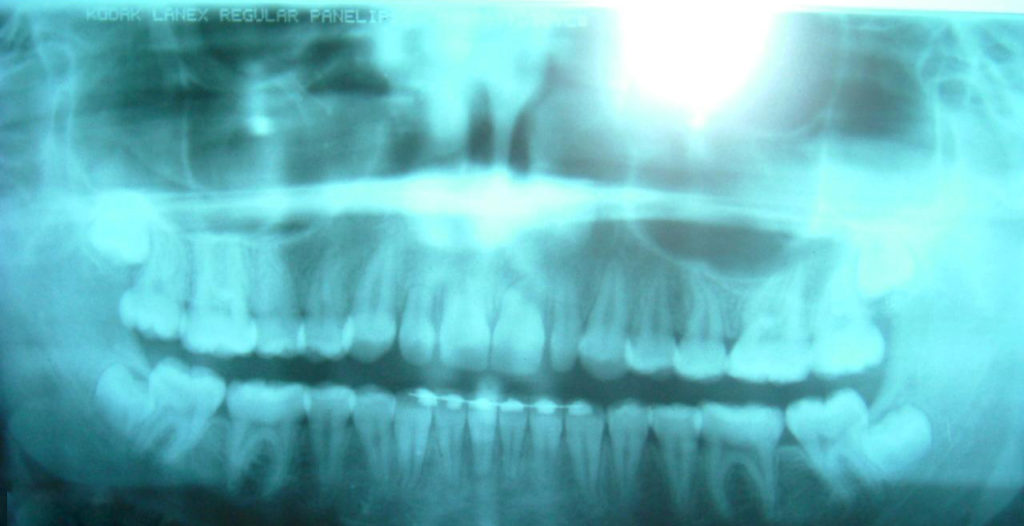According to two 2010 studies it is possible to use a panoramic x-ray of lower wisdom teeth to prove if someone is older than 18 years old and also to prove if someone is older than 21 years old. Recently on this site the issue of forensic age estimation using wisdom teeth was explored. In this article it was shown from several studies by Olze et al. that age estimation based on panoramic x-rays of wisdom teeth exploring tooth emergence must take into account populations representative of whom the person belongs in order to be more reliable. It was also discussed how Immigration and Customs Enforcement (ICE) in the U.S. is using dental x-rays to attempt to determine the age of the migrant. More information on this can be found in the article titled “Here’s how ICE sent children seeking asylum to adult detention centers,” by Aura Bogado in Reveal from the The Center for Investigative Reporting published May 2018.
In the article by Bogado a discussion is made of two cases where ICE held individuals in adult detention centers based on an analysis federal immigration authorities had conducted by a Texas dentist. The dentist assigned an empirical statistical probability that the two individuals had attained 18 years of age. The dentist also assigned a possible age range for both individuals. In Bogado’s article the redacted reports by the dentist are available. Both reports seem to indicate the dentist used the method from Demirjian et al. in the article titled, “A new system of dental age assessment,” Human Biolology, vol. 45, pp. 211–227, 1973, to evaluate age based on wisdom teeth. This method is based on eight stages of root development and mineralization and is different than the method based on tooth emergence used in the prior articles by Olze et al. discussed on this site in the post forensic age estimation using wisdom teeth. Furthermore, there were also two additional articles by Olze et al. with different approaches: the first titled “Evaluation of the radiographic visibility of the root pulp in the lower third molars for the purpose of forensic age estimation in living individuals,” International Journal of Legal Medicine, vol. 124, pp. 183–186, 2010, and the second titled “Assessment of the radiographic visibility of the periodontal ligament in the lower third molars for the purpose of forensic age estimation in living individuals,” International Journal of Legal Medicine, vol. 124, pp. 445–448, 2010.
In the article by Olze et al. that discusses the root pulp the authors proposed a four-stage classification using lower wisdom teeth: Stage 0.) the lumen of all root canals is visible all the way to apex, Stage 1.) the lumen of one root canal is not fully visible to the apex, Stage 2.) the lumen of two root canals are not fully visible to the apex, or one canal may be virtually invisible in full length, and Stage 3.) the lumen of two root canals is virtually invisible in full length.

Using this approach a total of 1,198 panoramic x-rays from 629 females and 569 males was examined using a German population. The authors attempted to include about 20 individuals at each age from ages 15 to age 40 for both females and males although at some ages it was slightly below 20 individuals. The authors also stated that an assessment of the pulp of the upper jaw may be problematic as the maxillary or upper wisdom teeth are often overshadowed by bone structures. In the study it was found stage 0 was first noticed at age 17.2 years and at age 17.6 years in females and males respectively. Stage 1 was first observed at age 21 years in males and at age 21.6 years in females. Stage 2 was first observed by males at 22.3 years and by females at 23.4 years.
The authors therefore makes the conclusions
“…for stage 1, the examined individual must be over 18 years of age and most probably over 21 years of age. For stages 2 and 3, the age can safely be stated to be over 21 years of age.”
Thus based on assessing the root pulp by Ozle et al. one can determine by looking at lower wisdom teeth in a panoramic x-ray if an individual is over 18 years if they are in stages 1, 2, or 3 and if an individual is over 21 years if they are in stages 2 or 3.
In the article by Olze et al. that discusses the periodontal ligament the authors proposed a four-stage classification using lower wisdom teeth: Stage 0.) the periodontal ligament is visible along the full length of all roots, Stage 1.) the periodontal ligament is invisible in one root from apex to more than half root, Stage 2.) the periodontal ligament is invisible along almost the full length of one root or along part of the root in two roots or both, and Stage 3.) the periodontal ligament is invisible along almost the full length of two roots.

The same data used for the root pulp with 1,198 panoramic x-rays from 629 females and 569 males was examined using a German population. In the study it was found stage 0 was first noticed at age 17.2 years and at age 17.6 years in females and males respectively. Stage 1 was first observed at age 20.1 years in males and at age 18.9 years in females. Stage 2 was first observed by males at 22.3 years and by females at 22.5 years.
The authors therefore make the conclusion
“If stage 1 is determined, it is, therefore, possible to prove that an individual has already attained the legally relevant age of 18 years. For stages 2 and 3, it can be stated beyond reasonable doubt that a person is over 21 years of age.”
Thus similarly to the root pulp, when assessing the periodontal ligament by Ozle et al. one can determine by looking at lower wisdom teeth in a panoramic x-ray if an individual is over 18 years if they are in stages 1, 2, or 3 and if an individual is over 21 years if they are in stages 2 or 3.
It is not clear why the Texas dentist working with ICE did not use either of these methods by Ozle et al. in his determination but instead relied on the Demirjian method. However perhaps the article by De Angelis et al. titled “Application of age estimation methods based on teeth eruption: how easy is Olze method to use?” in the International Journal of Legal Medicine (vol. 128, pp. 841–844, 2014) sheds light on this issue.
In the De Angelis study, a total of 61 panoramic x-rays from 33 males and 28 females between 16 and 51 years of age had the Olze method based on the periodontal ligament applied by two physicians and one dentist. Each had no training on the Olze method based on the periodontal ligament and assigned a stage of 0, 1, 2, or 3 to each X-ray based on the visibility of the periodontal ligament of the wisdom teeth present. The study found the error between the two physicians was 43% for the lower right wisdom tooth and 42% for the lower left wisdom tooth. The error between the dentist and the first physician were 57% and 49% for the lower right wisdom tooth and lower left wisdom tooth respectively. The error between the dentist and the second physician were 47% and 23% for the lower right wisdom tooth and lower left wisdom tooth respectively.

The authors of the De Angelis study state
“Olze’s method [based on the periodontal ligament] is recent and has great potential, but deals with the evaluation of soft tissues as opposed to calcified tissues which may be more difficult to tackle, especially if the operator is not adequately trained…in a variable number of observations ranging between a quarter and a half, two observers usually gave a different evaluation.”
Thus it appears that caution is needed when applying the Olze method based on the periodontal ligament to determine if an individual is over 18 or over 21 based on x-rays of their lower wisdom teeth. It would make sense that similar caution should be warranted when applying the Olze method based on the root pulp. According to a lawyer and dentist interview in the article by Bogado dental exams should not be used as the sole evidence to make a medical age determination and skeletal evidence should also be used. As discussed in the article by Bogado, X-ray dental reports are being used by dentists working with ICE to allegedly send minors to adult detention centers which may pose a risk to their safety. It is also not clear if dentists and other medical professionals working with ICE are using either of the two Olze methods in their analysis to determine age based on x-rays of wisdom teeth.
